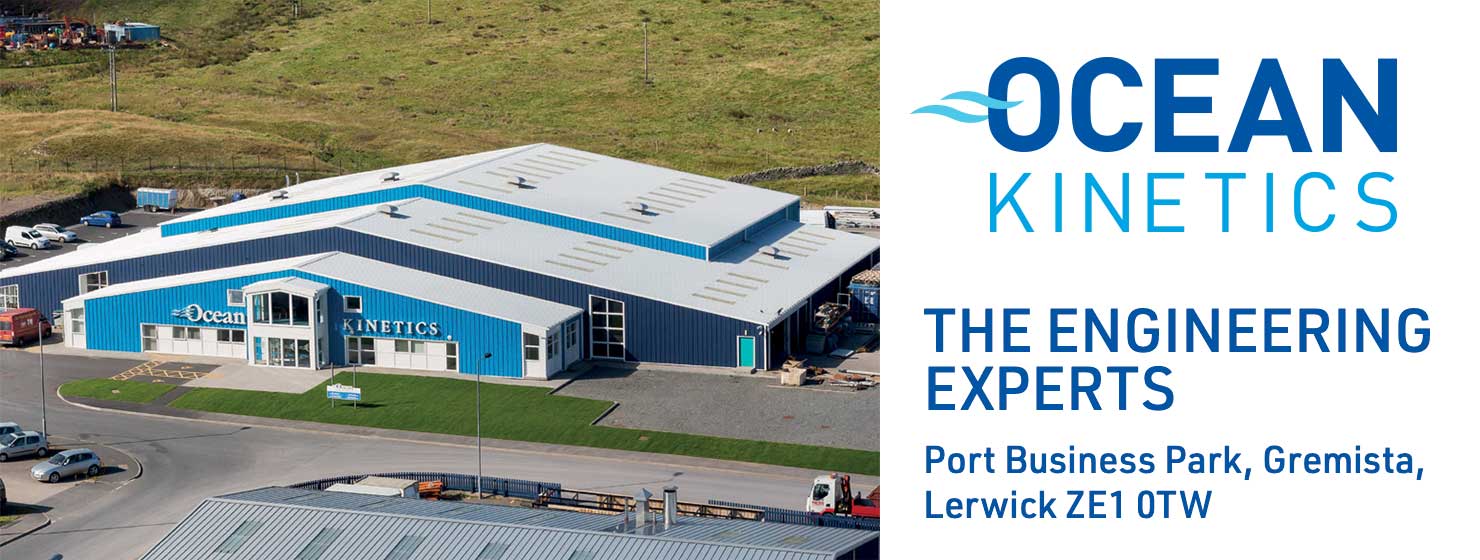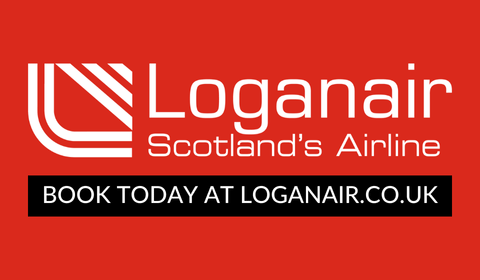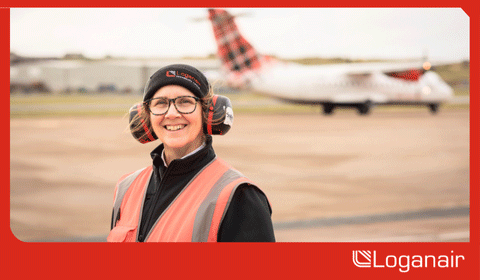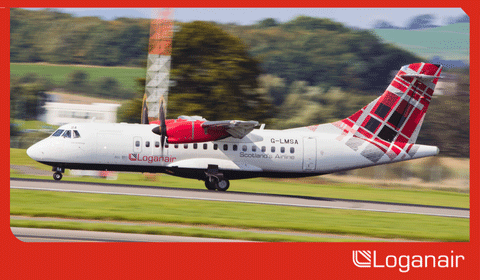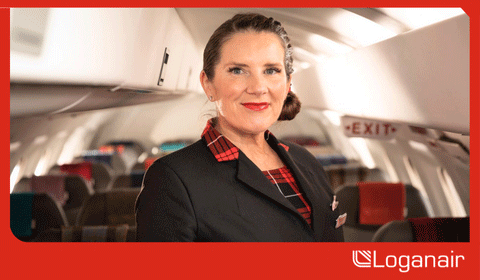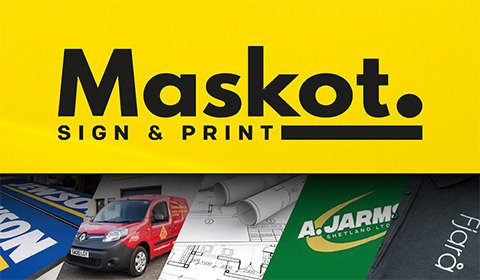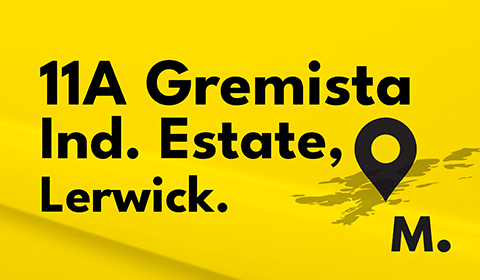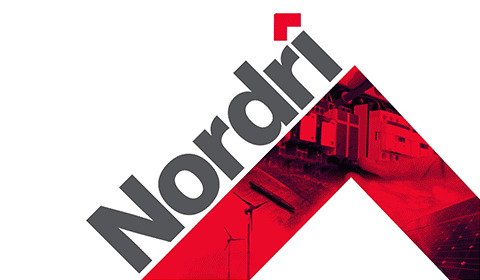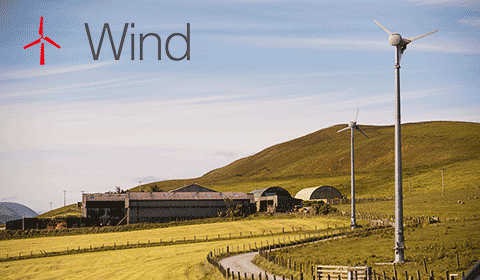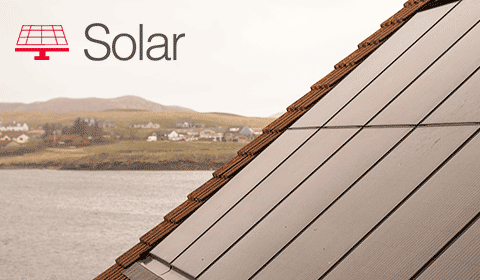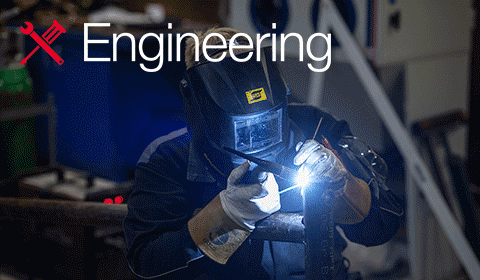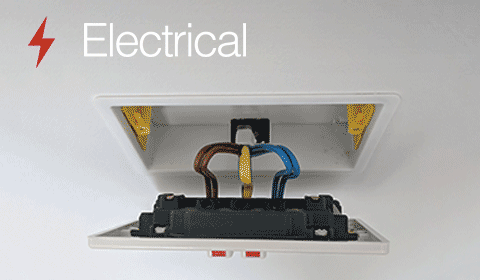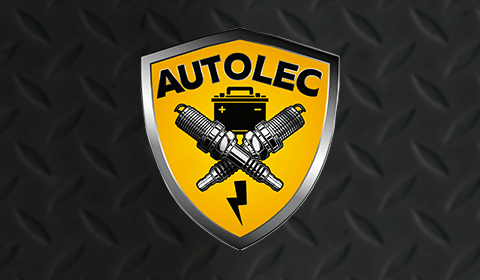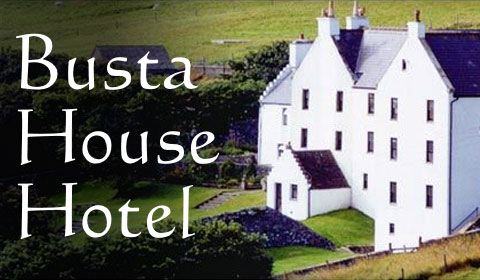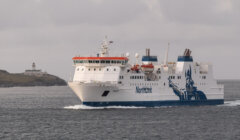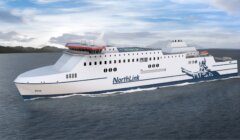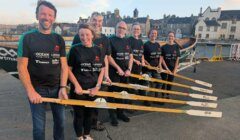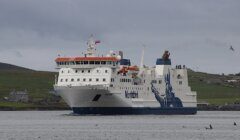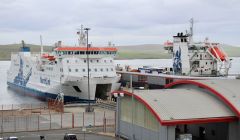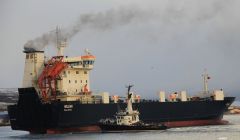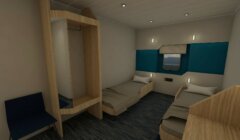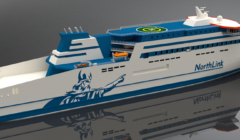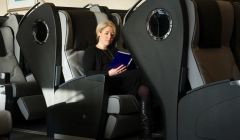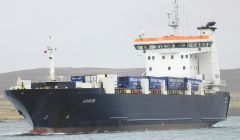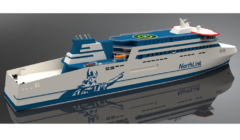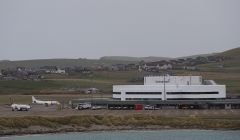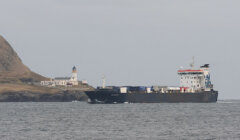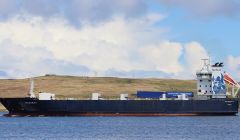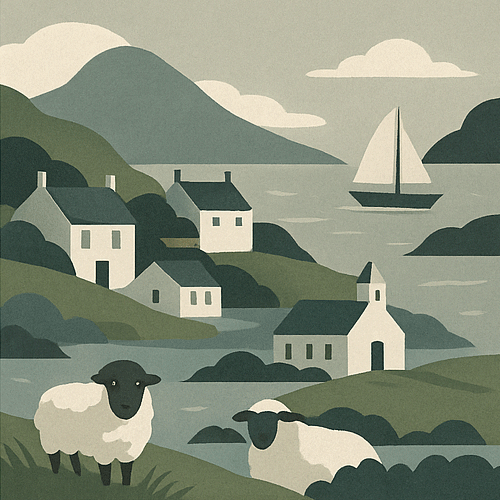Letters / Freighter plus? A better solution would be catamarans to Dundee
Faroe.
Facebook reports a Torshavn shipyard will build two ferry types for local use. A 25 metre one for two cars and 75 passengers, and a 45 metre one for 20 vehicles and 145 passengers, types which could be used for Shetland’s internal ferry transport.
Faroe of course built the original ro-ro ferries (now aging) for Shetland – the Scottish Office had proposed side loaders.
Norway.
Two new catamaran type ferries will service the Bodo/Svolvaer route to Lofoten: Fuel – biodiesel/hybrid fuel cells derived from hydrogen from wind turbines/H2 at Bodo. Will the ferries which they will replace still be available – for Shetland, satisfy the resilience needed in the ferry fleet?
Many catamaran freight and passenger types operate throughout the world. An internet search finds many for sale together with shipyards who build them. Several routes traverse open waters: a one way voyage under 200 miles in Korea to Jeju island and others to Japan.
One newly completed catamaran services Sweden to its Gotland island, powered by hydrogen, reducing CO2 emissions. Interesting! Methanol?
Freight/passenger catamarans services the Isle of Man and the Pentalina and Alfred across the Pentland Firth, chartered to Calmac for Hebridean routes. The Alfred was chartered for a further five months to cover for the incompetence of Transport Scotland.
Service to the Inner and Outer Hebrides by catamaran was proposed to Transport Scotland, who with questionable wisdom didn’t accept, even though the economics (saving – standing, operating and capital costs) would result in a reduction of fuel consumption and greenhouse gas emissions than from the existing monohulls.
Taxpayers are left to deal with the £££ millions squandered on the Ferguson Marine fiasco, the result of Scottish Government’s ineptitude.
Many catamaran types operate across the Solent, built at the local Wight Shipyard from aluminium, saving on the weight and cost of steel and have modern engine and propulsion systems. This results in much better control during berthing and turning operations than with the propellers of most monohull designs.
The Korean example above operates over open seas – indicating catamarans on the Lerwick/Britain route would be viable, and provide greater capacity than the 20+145 Faroese example above.
A passenger/freight catamaran including cabins might have a bigger beam than the present ferry – possibly restricting turn around berthing at Aberdeen, therefore serious consideration should be given to using a terminal further south, such as Dundee, having air and railway connections.
Two or three large catamarans from Lerwick to Britain could replace say six or more vessels of the current fleet. Many savings to be made.
Perhaps It could all be financed from the recent increases in the UK’s Defence Budget in accordance with the desire to secure the UK’s national security, in association with MoD and space developments at Saxa Vord, outwith the Scottish budget.
Transport Scotland’s recent proposal to replace the Helliar and Hildasay by two freight-plus vessels is therefore not the best solution, as two or three large freight/passenger catamarans could provide better service than the combined capacity of the present fleet of six or even seven vessels.
Shetlanders together with SIC councillors, officials, MSP, MP should consider all the above carefully and make representation to Holyrood and Westminster (it is the latter of course who controls the purse strings) to ensure that Shetland (and the wider UK by extension and inclusion) gets the service it deserves, and not one foisted upon them by faceless bureaucrats and politicians who will be gone before they have to account for their actions.
Shetlanders will look forward to hearing what the SIC councillors and officials will do about it all.
Cecil Robertson
Inverness
